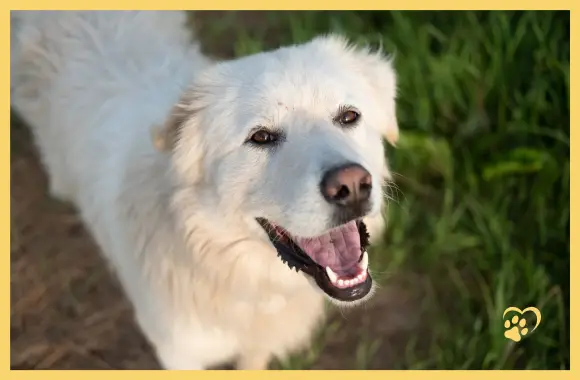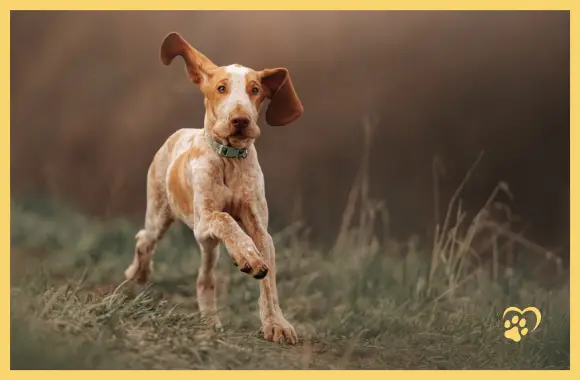Dogs are great - they give us love, companionship and are always there when we need them. But did you know that dogs are much more than meets the eye?
We have gathered some of the most popular facts about dogs.
1. dogs smell better than people
Dogs actually have a much stronger sense of smell than humans. Dogs' sense of smell is about 1,000 to 10,000 times more sensitive than humans'.
This is because the olfactory part of the dog's brain is much larger than that of humans. The area of the brain responsible for the sense of smell is called the olfactory bulb, and in dogs it is about 40 times larger than in humans. This allows dogs to perceive minute amounts of substances that are invisible to humans, and they can also detect subtle differences in odors that humans would not notice.
Dogs use their strong sense of smell in many areas such as searching for missing persons, detecting drugs or explosives, medical diagnosis and even in the food industry.
2. dogs can sniff out medical problems
Some dogs can actually sniff out medical problems. Their sense of smell allows them to detect minute changes in a person's body odor that may indicate illness.
Some examples:
Dogs can sniff out the smell of low blood sugar in people with diabetes and alert their owners before they notice symptoms. Dogs can detect the smell of cancer cells and even identify certain types of cancer such as lung cancer, breast cancer and prostate cancer. Dogs can also detect the smell of infectious diseases such as malaria, tuberculosis, and covid-19.
There are medical professionals who train dogs to use these skills, for example, in the early detection of cancer. Studies are being conducted to investigate the abilities of dogs in diagnosing diseases. Although there are no official medical applications yet, it is clear that dogs can play a role in medical diagnosis.

3. dogs can breathe and smell at the same time.
They have the ability to stop or reduce breathing when sniffing. This allows them to perceive and distinguish multiple odors independently with their nostrils. They can also control their nasal muscles to direct airflow in different directions, allowing them to smell from different directions and distances. This mechanism is also known in dogs as "Flehmen" or "Flehmen reaction". It is a way for dogs to open and close their nostrils and hold their breath to better detect scents. This is especially true when the dog is looking for pheromones or sexual scents.
4. dogs hear better than humans
Dogs, unlike humans, have very sensitive hearing. Dogs can perceive higher frequencies and a wider range of sounds than humans.
Dogs can hear in the frequency range of about 40 Hz to 60 kHz, while humans only have a hearing range of about 100 Hz. 20 Hz to 20 kHz should be sufficient. This means that dogs can pick up sounds that humans cannot hear.
Dog ears have a special adaptation called the "pinna". This is an earlobe that can move and sense the direction of sound, allowing him to localize the sound. Dogs use their good hearing and are often used in tracking, hunting, security and even in the music industry.
It should be noted that dogs, like humans, are sensitive to loud and irregular noises that can damage their ears and cause stress. Therefore, when walking a dog in a noisy environment, you should pay attention to the size and duration of the noise.
5. some dogs like to swim
Although it varies from dog breed to dog breed, most dogs can swim well.
Some breeds like Golden Retrievers or Newfoundlands are known to be natural swimmers and enjoy being in the water. They are often classified as water dogs or hunting dogs and were bred to hunt, retrieve or rescue.
Other breeds such as Poodles or Maltese, are also very good swimmers, although they are often classified as non-water dogs.
There are also breeds that do not like swimming, such as bulldogs or dachshunds, which are rather reluctant to go into the water. This is probably due to their body shape or coat.
It is essential to make sure that dogs learning to swim do so in a safe manner and that it causes them as little stress as possible. It is important that dogs are always supervised when swimming, as they can drown, just like humans.
6. dogs sweat differently than people
Humans regulate their body temperature by sweating through their skin, which creates moisture. A dog's skin has few sweat glands and produces little moisture.
Instead, dogs regulate their body temperature mainly through breathing. They breathe faster to get rid of heat, and they exhale to remove moisture from their breath.
Dogs have sweat glands on their paws, these produce moisture which helps to cool their paws and improve traction on slippery surfaces. It is worth noting that dogs, especially long haired dogs, absorb heat faster than other dogs because their fur does not cool them down due to air circulation. Therefore, dog owners should make sure that their dog has enough water and shade and not leave him outside for a long time.

7. even among dogs there are left- or right-handed people
There are differences in right or left paw dominance in dogs as in humans, but it is not known exactly how common this is in dogs.
Some studies show that some dogs prefer paws when performing tasks, such as retrieving objects or pressing switches. But other studies have shown that most dogs have no clear preference for one paw and that both work equally well.
It is important to note that a dog's choice of paws may be genetic or influenced by environmental factors such as upbringing or trauma.
You can find out if your dog is left or right handed by giving them their favorite toy or interactive game and seeing which paw they use first to help them.
8. dogs nose print is unique
It is used to uniquely identify dogs. Similar to the fingerprint in humans, each dog has its own individual nose print. This is determined by the arrangement and size of the pores and grooves on the nose.
These differences vary from breed to breed as well as from dog to dog. Some dogs have larger pores and deeper grooves, while others have smaller pores and shallower grooves. These differences are so unique that even twins from the same breed can have different nose prints.
The use of nose prints to identify dogs is not new. As early as the 1970s, scientists introduced the idea of a noseprint system for identifying dogs. Since then, the technology has evolved. One of them is the use of special imprint cards on which the dog can leave its nose print. Alternatively, a digital camera is used to capture a high-resolution image of the nose.
The nose print of dogs is used to identify them in various applications. One of these is in dog breeding to ensure that each puppy is uniquely identified. It is also important in veterinary medicine to ensure that the right dog is treated. In addition, it is elementary for breeders to be able to prove the pedigree of the animal.
9. dogs see less colorful than humans
Dogs see fewer colors than humans. The human eye has three color receptors (cones) that perceive colors: red, green and blue. This allows us to perceive a wide range of colors.
Dogs, on the other hand, have only two color receptors, which are responsible for red and blue. Therefore, they cannot perceive the color green the way we do. Instead, they see green as gray. Furthermore, the color perception that is clearly visible to us humans may be different or even invisible to dogs.
Dogs have poorer color vision than humans; they cannot distinguish colors well. On the other hand, they can see better in the twilight because their retina amplifies the incident light.
10. border collies are the most intelligent dogs
Border Collies are considered one of the smartest dog breeds. They are highly trained and learn new commands and tricks quickly. They are known for their problem solving skills and their ability to adapt to different environments and tasks.
Border Collies are therefore often used as herding dogs, in rescue work and in agility training.
They are also popular as family dogs because they are affectionate and loving.
Other dog breeds considered intelligent are Poodles, Golden Retrievers, German Shepherds and Rottweilers.
Conclusion
These ten facts testify to the intelligence and abilities of dogs. Color perception, sense of smell, heat balance, to pick just three examples.
Of course, each breed has its own talents and abilities. These strongly depend on education and training of a dog.
Overall, it has been reconfirmed that dogs are fascinating and complex creatures that have more to offer than just their role as faithful companions.
Maybe they will think about that the next time they take their dog for a walk.
